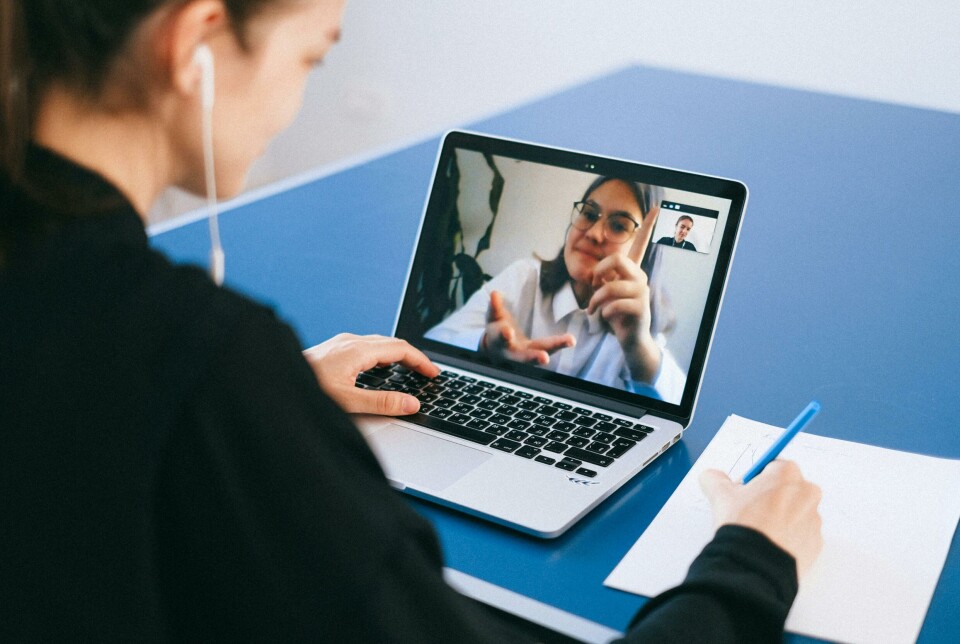THIS CONTENT IS BROUGHT TO YOU BY the Norwegian centre for E-health research - read more

People are receiving more digital healthcare in Europe
Digital contact and remote monitoring have made significant strides in the healthcare sector in Europe. This is shown in a survey from the World Health Organization.
From being a niche area in healthcare, digital services are now more widespread, but there are still factors hindering development.
The pandemic forced the healthcare sector to rethink. Many countries introduced digital contact and treatment to provide healthcare to the population while infection control measures made it difficult to meet in person.
According to WHO's 2022 survey, which involved 53 European countries, digital contact and remote follow-up are on the rise. Services such as teleradiology, telepsychiatry, and telemedicine are among the most widespread.
In Norway, there have been interesting developments in the field, and researchers at the Norwegian Centre for E-health Research have been following the new trends.

“This was the reason why the WHO European Office invited us to collaborate. We have contributed by summarising findings and highlighting Norwegian examples in a scientific article,” says Professor Monika Knudsen Gullslett, who led the work at the Norwegian Centre for E-health Research.
Norway was an early adopter
Norway has been a champion of digital health for many years. A good example is teleradiology, which has been in use in Norway for over three decades.
This technology enables radiologists to analyse X-rays and diagnose patients remotely, saving time and resources.
“Teleradiology has pioneered telemedicine. What's new now is the use of artificial intelligence in image analysis. This represents a promising step towards improving the quality of radiological services and reducing the time it takes to analyse images," says Gullslett.
A Norwegian project is exploring this potential, which could lead to faster and more accurate diagnoses, better planning, new research opportunities, and a more sustainable health service in the long run, the professor adds.
Another area where Norway has been a leader is in digital mental health.
The use of digital solutions to provide mental health care increased significantly during the pandemic. The eMeistring programme has become available to everyone. Here, people with mental health problems are offered online cognitive behavioural therapy.
This is an example of how technology can contribute to better health for more people.
Funding, regulations, and other obstacles
Despite the advances in digitalisation, there are still several challenges that need to be addressed. Funding is the biggest barrier, according to WHO's survey.
Many European countries reported struggling to find resources to develop and maintain digital services. However, services in Norway have come a long way.
Another challenge is the lack of clear rules and guidelines. During the pandemic, temporary rules were introduced that enabled the rapid introduction of digital contact and treatment, but these must now be replaced with permanent solutions.
Norway has shown the way by making temporary measures, such as e-consultation for sick leave, a permanent scheme from July 2023.
“Studies conducted by the Norwegian Centre for E-health Research show that e-consultations for this purpose led to more efficiency and flexibility, which contributed to the change in the guidelines,” says Gullslett.
Evaluation and skills development
If digital follow-up is to become a permanent part of the healthcare system, countries need to invest in systematic monitoring and evaluation of the measures introduced. It is important to know that the digital solutions actually work and provide better health for patients.
Norway has already taken some steps in this direction. Norwegian studies show that remote monitoring of patients can lead to better health, increased patient safety, and smarter use of healthcare professionals.
The population also needs to gain expertise in the use of digital tools, so these can really contribute to better health for everyone. Better internet access and increased digital training are therefore important measures.
“E-health solutions require patient participation, but do not reach everyone. Especially not people with cognitive impairment, low income, substance abuse problems, mental illness, or immigrants with low language and technology skills," says Gullslett.
She highlights the need to rethink how to make digital solutions accessible for all, calling for further research and innovation.
Digital healthcare has the potential to revolutionise the healthcare system, especially when we know that the country is getting older and that there is a shortage of healthcare workers.
The survey shows that this requires a joint effort from governments, healthcare professionals, and technology providers. It's also about funding, regulation, sustainability, and most importantly, the needs of the population.
References:
Gullslett et al. Telehealth development in the WHO European region: Results from a quantitative survey and insights from Norway, International Journal of Medical Informatics, vol. 191, 2024. DOI: 10.1016/j.ijmedinf.2024.105558
The ongoing journey to commitment and transformation: digital health in the WHO European Region, 2023. Copenhagen: WHO Regional Office for Europe, 2023.
———
Read the Norwegian version of this article on forskning.no

This content is paid for and presented by the Norwegian centre for E-health research
This content is created by the Norwegian centre for E-health research's communication staff, who use this platform to communicate science and share results from research with the public. The Norwegian centre for E-health researchis one of more than 80 owners of ScienceNorway.no. Read more here.
More content from the Norwegian centre for E-health research:
-
Technology in the health and care sector: "This is not just about new gadgets"
-
Five Nordic and Baltic countries take a major step toward the future of health research
-
A digital chatbot can help you stay fit
-
Researchers' advice for better healthcare services: Listen to the patient!
-
Half of those who received mental health care found errors in their medical records
-
AI can understand your medical records: A new language model could revolutionise healthcare





































